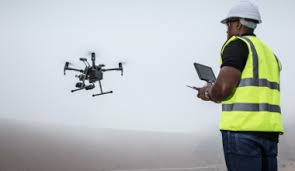Introduction:
Starting your journey as a drone pilot is an exciting adventure that combines learning with hands-on experience. Our Drone Pilot Training Course is designed to help enthusiasts gain the knowledge and skills to fly drones safely and responsibly. Let’s take a closer look at what the course is all about.
Course Structure:
Day 1 and Day 2 – Theory Sessions (Online):
Begin your learning from home. These sessions cover the basics of drone operation, including rules, safety, and how drones fly. Engage in online sessions to build a strong foundation for your drone flying journey.
Day 3 – Day 5 (At Flying Site):
Move from theory to practice as you step onto the flying site. These hands-on sessions give you real-world experience in handling drones in different situations. Apply what you learned during the theory sessions.
Theory Examination:
Check your understanding of the theory with an exam. This ensures you know important things like airspace rules, safety steps, and the principles of flight.
Drone Simulator Sessions & Assessment:
Practice flying in a safe virtual environment. The simulator sessions let you test your skills before flying a real drone.
Drone Assembly:
Learn to put together and take apart drones. Understanding the parts and how they work is an important step to becoming a skilled drone pilot.
Flight Training:
Guided by experienced instructors, practice essential manoeuvres like take-off, landing, and hovering. Gain confidence in flying a drone safely and effectively.
Final Skill Test:
Show what you’ve learned in a final test. This test checks your overall ability to operate a drone independently.
Course Syllabus:
1.Stakeholders & their Laws, Drone Rules 2021:
- Understand who is involved and the rules for flying drones in 2021.
2.Basic Principles of Flight:
- Learn the fundamental ideas behind how drones fly.
3.ATC Procedures & Radio Telephony:
- Discover how air traffic control works and learn effective radio communication for safe drone operations.
4.Fixed-wing Operations & Aerodynamics:
- Explore how fixed-wing drones work and the science of how they move through the air.
5.Rotorcraft Operations & Aerodynamics:
- Understand how rotorcraft, like helicopters, operate and the science behind their flight.
6.Weather & Meteorology:
- Grasp how weather affects drone flights and how to navigate safely in different weather conditions.
7.Drone Equipment and Maintenance:
- Get familiar with drone parts, what they do, and basic maintenance to keep your drone in good shape.
8.Risk Assessment & Analysis – Safety Management/ TEM:
- Learn how to assess and reduce risks, keeping safety a top priority in your drone operations.
9.Payload Installation & Utilisation:
- Explore how to add and use additional equipment on drones for specific tasks.
10.Intro to Drone Data & Analysis:
- Dive into the world of drone data, understanding how to collect, analyze, and use information gathered during flights.
Conclusion:
Our Drone Pilot Training Course is more than just a program; it’s a journey into the world of flying drones. By mixing theory, hands-on experience, and a detailed syllabus, we ensure our students become skilled and responsible drone pilots. Join us as we explore the skies, unlocking countless possibilities in the exciting world of drone operation. Your adventure starts right here!

